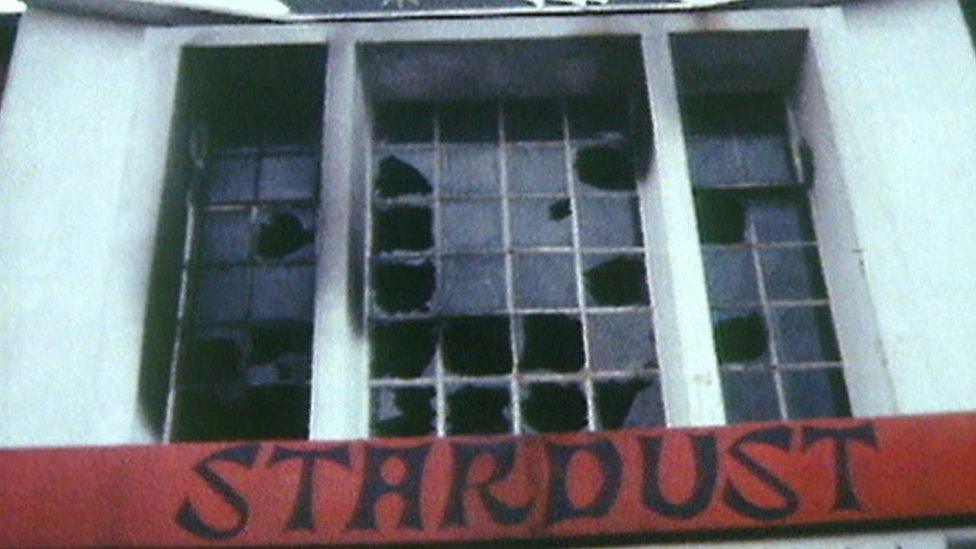Apology call after nightclub fire deaths verdict
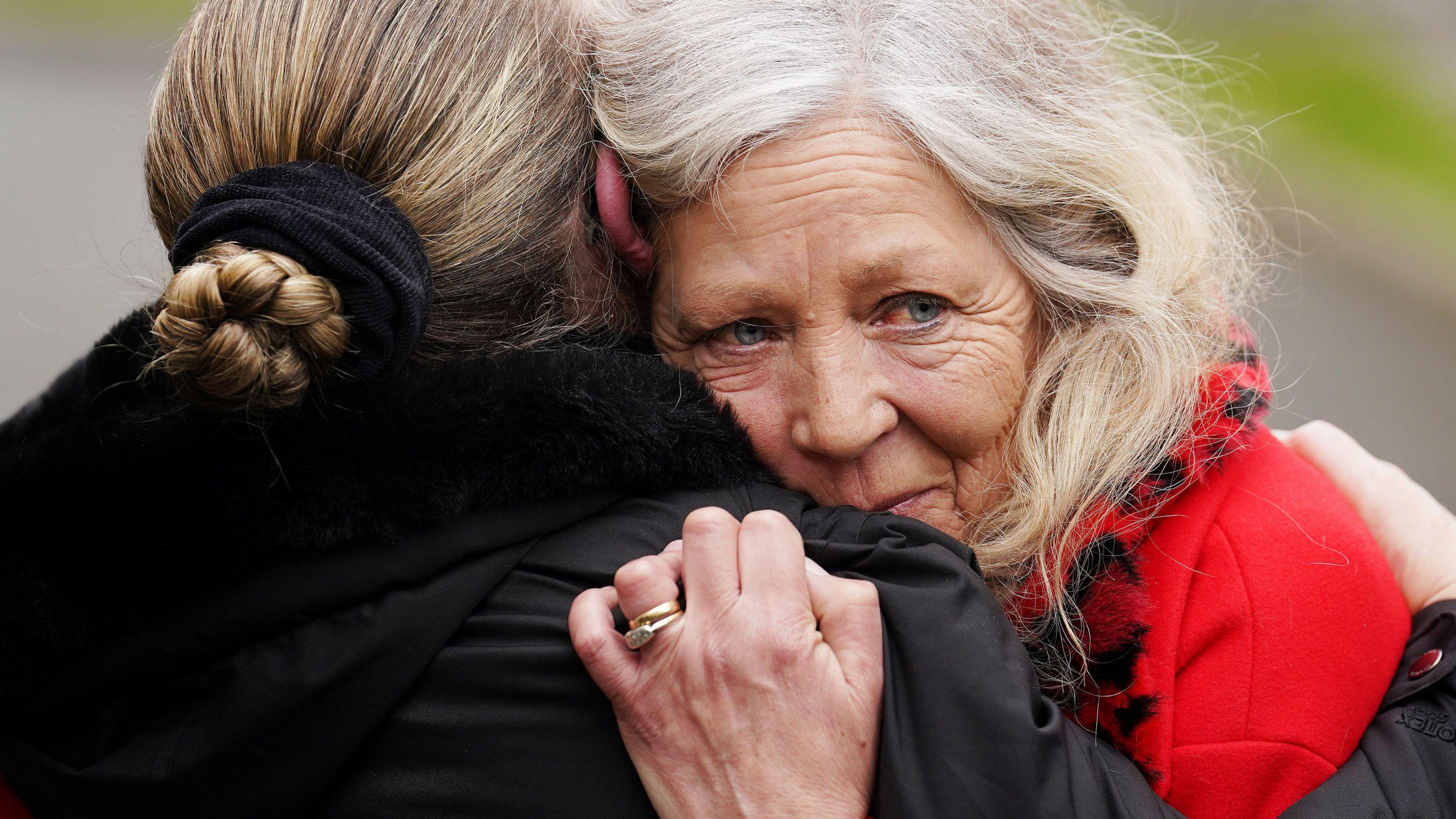
Stardust survivor Antoinette Keegan and her sister Lorraine attended Thursday's verdicts
- Published
A number of relatives of 48 people who died in a Dublin nightclub fire in 1981 have called for a government apology after a jury found they had been unlawfully killed.
The jury in the inquests delivered their verdict after 11 days of deliberation.
It was met by cheers and applause from relatives in court.
About 800 people had been attending a Valentine's Day disco when the fire started.
Jurors also found it began in the hot press of the main bar and was caused by an electrical fault.
The original inquest, in 1981, ruled the fire started because of arson, a theory which was never accepted by the families of victims.
That ruling was dismissed in 2009.
After years of campaigning by the families, the then-attorney general granted a fresh inquest in 2019.
'We never gave up' - Stardust families react
Maurice Frazer, whose sister was among those who died in the fire, said they had “tirelessly battled against the barriers and closed doors of Ireland's political and justice systems, clinging to hope even when it seemed futile".
“Finally those doors were broken open,” he said.
"Throughout this journey families have endured the unbearable pain of losing parents, siblings and cherished friends, even decades later.
"For those decades our hearts and minds have been shattered and the mental toll has been exhausting."
Alison Croker, whose sister Jacqueline was among the victims, said: "Now I think it’s time that the Irish state actually apologise to each and everyone of us for the systematic abuse we’ve been put through."
What did the Stardust inquest jury find?
The inquest, the longest running and largest in the Republic of Ireland’s history, was held at Dublin City Coroner's Court.
It sat for 122 days and heard testimony from 373 witnesses.
The fire was first seen outside the building between 01:20 and 01:40 local time. Gardaí (Irish police) arrived at 01:50.
The jury found the height of the nightclub ceiling and materials in the bar, including carpet tiles on the wall, were found to have contributed to the blaze.
Lack of visibility, lack of knowledge of the building and thick, toxic smoke were found to have made it more difficult for people to leave.
In addition, the heat of the fire, speed of its spread, failure of the emergency lighting system and lack of preparedness of staff played a part.
Emergency exits were locked, chained or otherwise obstructed and victims were impeded in their ability to exit.
The jury found that 42 people died on the premises.
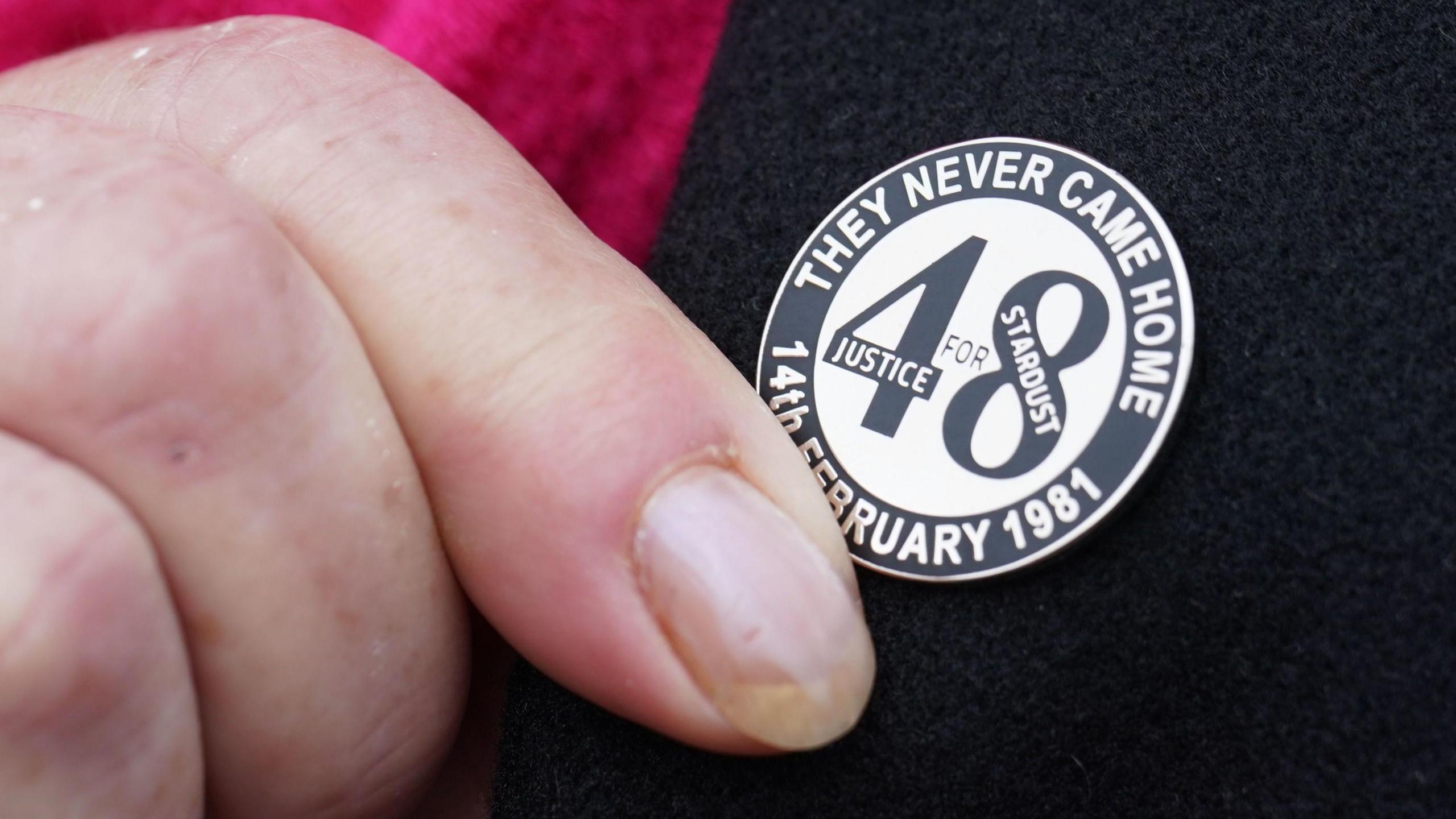
Forty-eight people died in fire in 1981
The coroner Dr Myra Cullinane, acknowledged relatives' ongoing grief, adding the inquest's existence was “in no small part due to the persistence and commitment of families over the years”.
"It remains the defining loss of their lives," she said.
Dr Cullinane ended by remembering the 48 young people who lost their lives "on that fateful night".
"It is their lives that we've sought to vindicate by way of these inquests."
What did the Stardust families say?
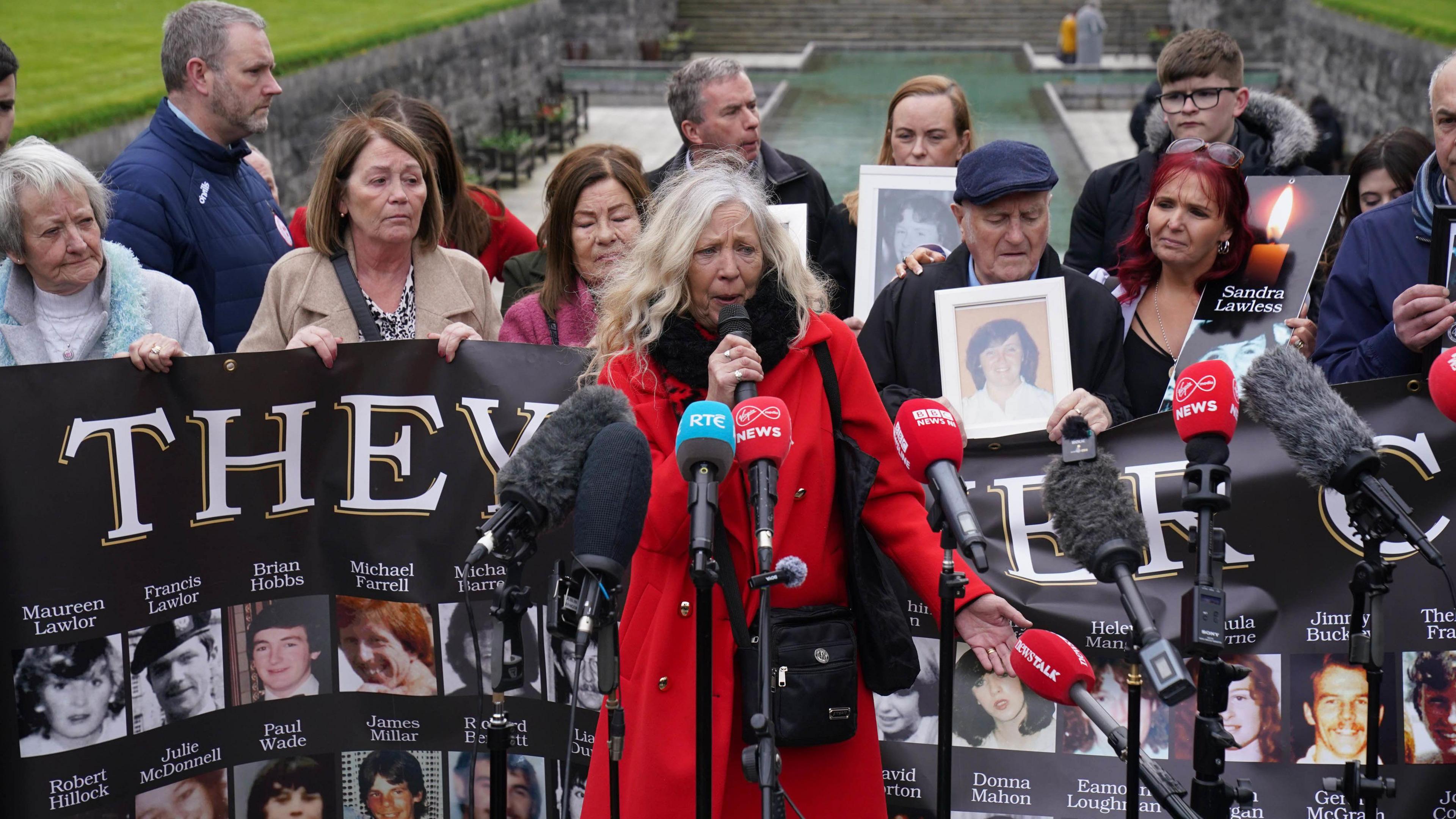
Antionette Keegan said that that it had been an “overwhelming day”
After Thursday’s verdict, many family members took the opportunity to speak following the culmination of a decades-long campaign.
Antionette Keegan, who survived the fire but lost her two sisters Mary and Martina, said it had been an “overwhelming day”.
"This day is for the 48," she added.
Lisa Lawlor was 17 months old when both her parents died in the fire - she said she was “delighted” with the verdict.
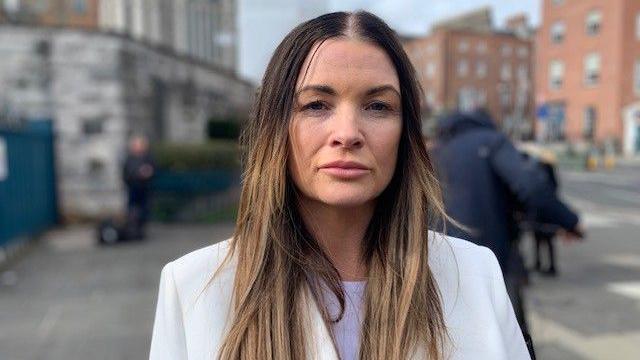
Lisa Lawlor said she was "delighted" with the verdict
Speaking on behalf of her mother, who lost three children in the fire, Louise McDermott said that for 43 years the families “had to fight” for justice.
"I just want to say to the 48 now that we're taking you out of the flames, the darkness and the smoke of the Stardust.
"We're bringing you back to the sunshine and the light and the music and you're coming back to us, to home."
Following the verdict, Taoiseach (Irish prime minister) Simon Harris described the Stardust fire as "one of the darkest moments in our history".
Addressing the families directly, he said: “You never gave up on justice for them, you never let Ireland forget about them.
“They were never alone, and our country owes you a great debt for that."
Irish President Michael D Higgins said the judgement was "of the deepest importance for all those whose lives were so irreparably altered by that most appalling of days”.
He added the verdict was “a vindication of the fight of those relatives”.
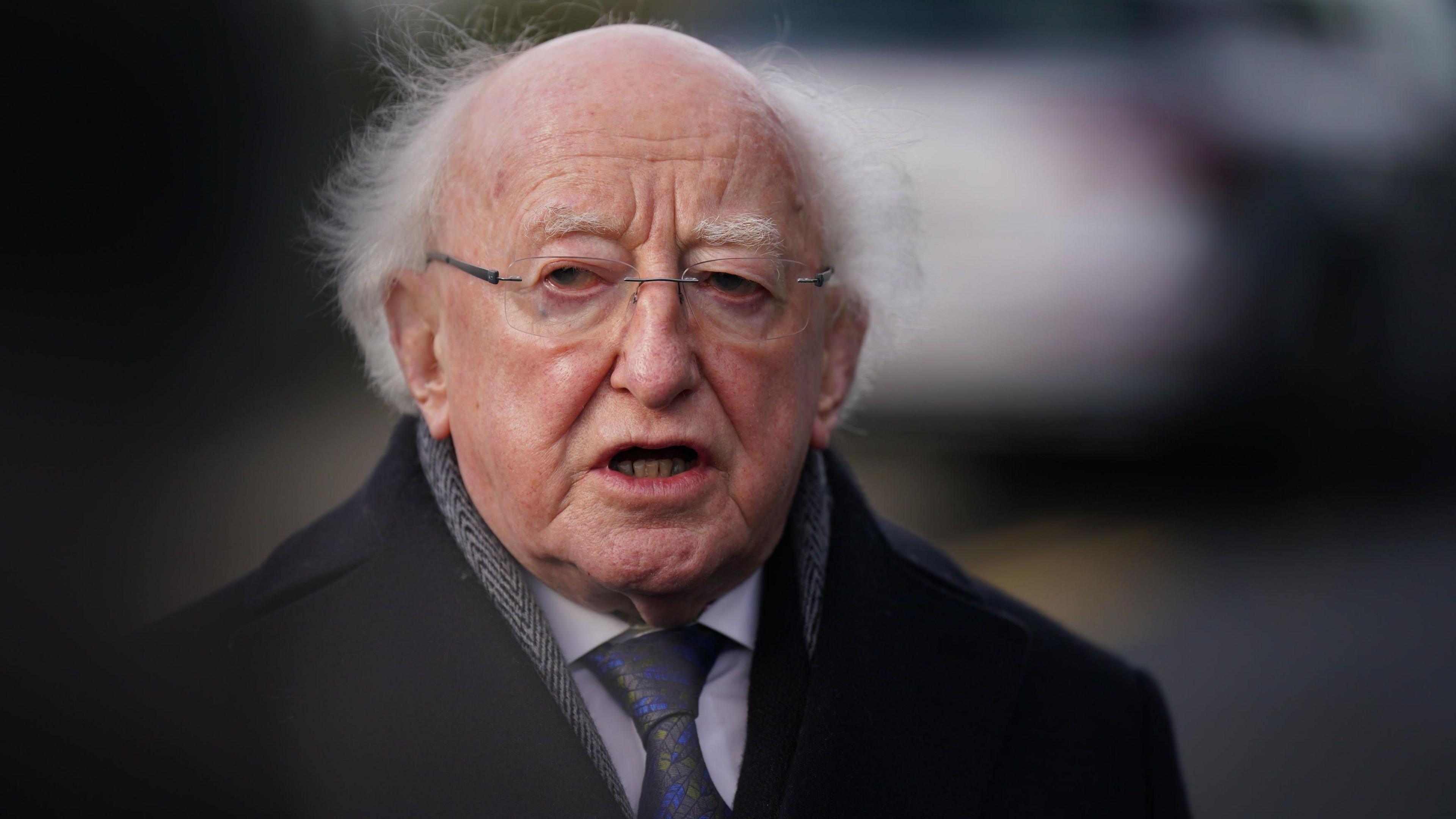
President Michael D. Higgins sad the verdict was a "vindication of the fight" of the Stardust families
Sinn Féin President Mary Lou McDonald said justice had been a long time coming.
Writing on social media, she said the verdict confirms what survivors, victims' families and Dubliners have always known.
Helen McEntee, the Irish Justice Minister, said it was a "landmark day" and that she hoped it brought some comfort to the families of those who died in the fire.
Ms McEntee said the government will now “consider the verdict and recommendations of the jury”.
Who died in the Stardust fire?
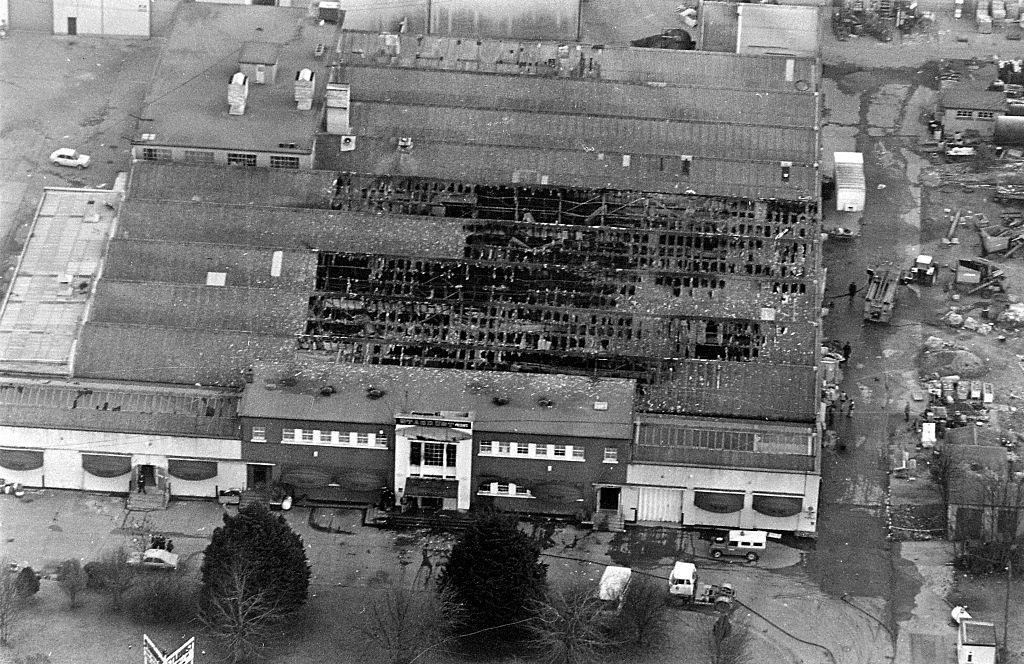
An earlier inquest originally ruled the cause of the fire was arson, a theory never accepted by the victims' families
The blaze was the largest ever fire disaster in the history of the Irish state.
The bulk of those who lost their lives were from Artane, Coolock and other parts of north Dublin, while three of the victims were from Northern Ireland - Susan Morgan from Londonderry, Robert Hillick and James Millar, both from Belfast.
A further 200 people were injured in the blaze.
The disco on the night of the tragedy was meant for over 21s - however 83% of the patrons were under that age.
The inquest heard that 65 of them were aged 14, 15 or 16 and 38 of the 48 victims were under 21.

Susan Morgan, Robert Hillick and James Millar, who were from Northern Ireland, died in the fire
Why were some Stardust doors locked?
Allow X content?
This article contains content provided by X. We ask for your permission before anything is loaded, as they may be using cookies and other technologies. You may want to read X’s cookie policy, external and privacy policy, external before accepting. To view this content choose ‘accept and continue’.
The bodies of some of the victims were found huddled around emergency exit doors which had been locked or had chains draped over them appearing to be locked.
Eamon Butterly, 78, the former manager of the Stardust, told the inquest he made the decision that the venue’s exit doors should be locked until as late as midnight, but it was the head doorman’s idea.
In his statement in October 1981, Mr Butterly said locking the doors had been “forced on me by the fact a large number of people were getting in for free due to the actions of their friends who were opening exit doors from the inside".
In 1981, Mr Butterly told gardaí (Irish police) that a policy of draping chains over exit doors had only been in place for "three weeks", but had told the then tribunal it had been in place for years.
Steel plates had also been welded to the toilet windows of the building.
A number of witnesses had reported in the weeks before the fire that they had seen electrical wiring exposed and sparks emerging in different areas around the building.
Mr Butterly also told the inquest that he did not know that the recommended trunking capacity had been exceeded on electrical wiring in certain areas of the bar and dance hall, which meant that the electrical system was overloaded.
Door staff told the inquest that they had not been given fire safety training.
Related topics
- Published25 April 2023
- Published13 February 2022
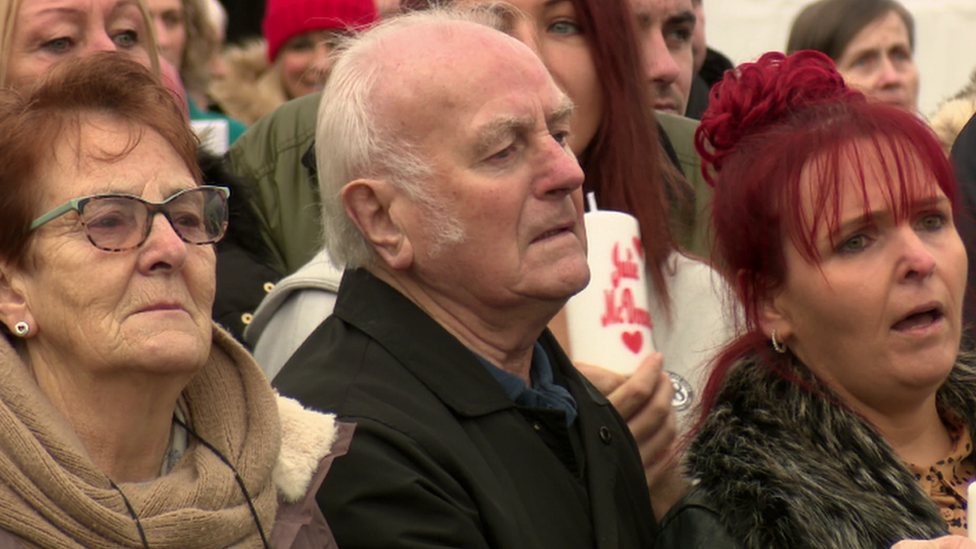
- Published2 May 2023
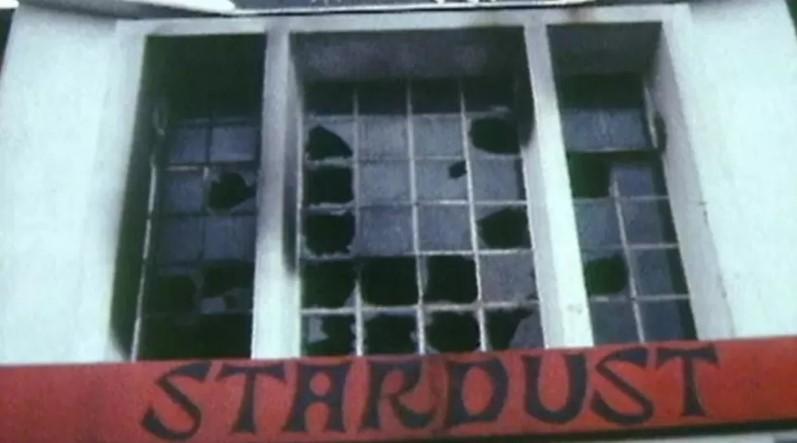
- Published25 September 2019
